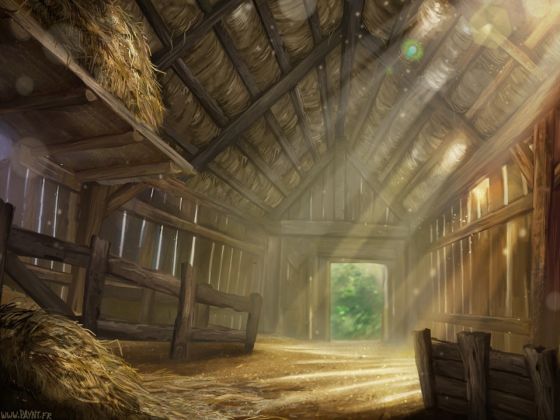Blocks (development)
From The Authentic D&D Wiki
Blocks are physical spaces that act as locations in the game setting, with which the player characters interact. When describing built locations, blocks will typically fit within an hexagonal area that is 145 yards in diameter — but a block may describe a notable feature surrounded by a prevalent topography, vegetation or civilisation. Natural environment "blocks" are often much larger, but may be considered a collection of adjacent block-sized hexes sharing the same characteristics. The blocks that can be found in the world setting are distributed according to their development level.
Contents
DEV-4
Natural Environments
- Barren: dry tract of thin vegetation (semi-desert or tundra), usually grass but possibly micro-scrub or moss & lichens, suitable for vermin monsters. Typically lacks sustenance to support herbavorous creatures. Not suitable for ural settlement, even at the subsistence level.
- Beastland: a verdant or barren area that spontaneously spawns wandering monsters into the Prime Material Plane, typically as rarely as once a year. As these monsters venture outwards, it is often difficult to locate the originating beastland.
- Blasted Deadlands: areas devoid of all life, even insects, marked by excessively harsh climate. These areas are inherently malevolent and spawn (serves as a gateway) unnatural monsters such as undead, demons and other creatures from the outer planes.
- Cliff Faces & Canyons: vertical or nearly vertical areas of exposed rock, acting as impassable barriers or choke points where passage is enabled between high topographical formations.
- Coastlines: atolls, beach, coral reefs, grottos, headlands, lagoons, sea cliffs
- Dunes: large masses of windblown sand, most common in desert environments but sometimes located near beaches. An area of dunes is called an dune expanse; large dune expanses are called ergs or sand seas. These are notably devoid of any vegetation (see waste).
- Fringe Barrens: barrens located on the edge of verdant or occupied lands.
- Glacier & Snowfield: persistent bodies of dense ice that form where the accumulation of snow is greater than its melting and sublimation. Glaciers form from snow fields, with crevasses and other stress features due to their movement.
- Grazing Land: untapped hunting grounds with extensive grass supporting large herds of meat-bearing animals.
- Jungle: areas of dense forest and tangled vegetation, often with poor drainage, acting as considerable barriers to travel.
- Lakeland: watered land with numerous bodies of fresh water, often acting as barriers to travel. Lakelands also occur where geological shield formations block or minimize river drainage.
- Mangrove Swamp: a submerged woodland or shrubland, formed by mangrove trees in brackish tidal salt water. Creatures from both land and sea mix together in these areas.
- River Rapids: sections of a river where the river bed has a relatively steep gradient, causing an increase in water velocity and turbulence.
- Roncaria: rough scrubland abounding with brambles and briars, prickly scrambling vines or shrubs, ground thorns or other impassable vegetation. Commonly interspersed with grazing land.
- Shingle Land: gravelly areas existing as sandless beaches or as extensive desert areas.
- Swamp: a forested wetland that acts as a transition between land and both freshwater and salt water. Related to bogs (moors lacking trees), fens (tall grass and shrubs) and muskeg (coniferous forest swamps). Marshlands describe lands that annually flood, while remaining dry through much of the year.
- Verdant: mixed meadowland and rich vegetation, wild but excellent for hunting and future homesteading. Excellent habitat for large herbivorous browsing monsters; animal trails abound.
- Wasteland: distinct from dunes, ergs and sand seas in that they are sandless, featuring areas of broken stone and gravel without vegetation.
- Watered Land: unoccupied verdant land with rich soil and an extensive water table near the surface. Springs are common.
- Waterfall: an area where water flows over a vertical drop or a series of steep drops in the course of a stream or river. Waterfalls also occur where meltwater drops over the edge of a tabular iceberg of ice shelf. Plunge pools are common features of waterfalls.
- Waterways: lakes, ponds, rivers
Built Areas
- Barbaric Camp: a primitive humanoid settlement thriving in a fertile wilderness region. May be friendly, may even have goods that can be bartered for; will ordinarily have no contact at all with civilization. Usually adjacent to grazing land, verdant or watered land blocks.
- Dungeon: a labyrinthine environment serving as a mixed biome for numerous creatures, not usually more than two miles deep. Denizens might exist independently at different levels, or they might be obedient to an overarching master race.
DEV-5
Natural Environments
- Ocean banks: submerged plateaus that are shallow compared to their surrounding area, accessed by boats and improved by markers and navigation to become fishing grounds.
Villages
- Housing
- Water village: small settlement constructed on a tidal mud flat, freshwater pond or marshland, with houses on pillars or jetties, allowing direct access to boats tied to each house. The village is often reachable only by boat.
- Landscapes
- Protected Beach: with fishing boats that are pulled high upon the beach to protect them from storms, with boats light enough to be carried; the settlement is located behind the beach in trees or among protective rocks.
